In Brno / Ja v Brne
I wrote this post in two languages. In English and Slovak language.
From time to time, happiness smiles at me at work and the management sends me for training. On the positive side, in addition to learning and learning something new, I have a change and I don't have to be at work. Most of the time, however, I still go to the same places that I already know well. But this time, luck smiled on me twice. I was sent for training to a city I had not been to before. I did not hesitate and agreed to the training. Too bad it was just a one-day training. I made it up by going to the place the morning before. However, the training site is several hundred kilometers away from my residence. As a result, the company's management agreed to this proposal. Although the condition was that I would go back on the day of the training so that I would be at work the next day.
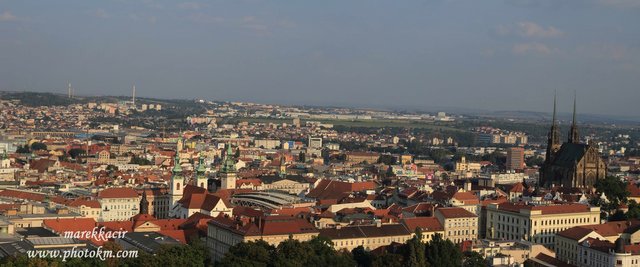
I got on the train and set off. What the hell didn't want me, the train was late and I missed the connection. So I had to wait two hours for the next one. I got on it and got off at the railway station in Brno. At home, I looked at the places I wanted to visit. I quickly orientated myself in and set off for the old town.
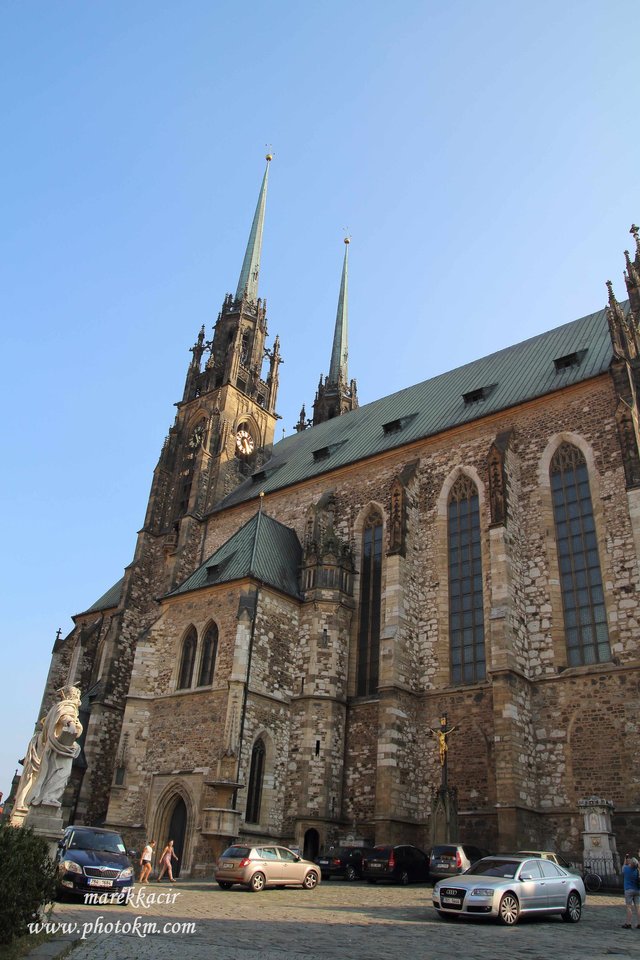
My steps were directed to the Cathedral of St. Peter and Paul. At first glance, it is a nice building and a landmark of the city. Its origins date back to the 11-12 century, when a Romanesque chapel was built in its place. Gradually, it went through changes, additions, reconstructions.
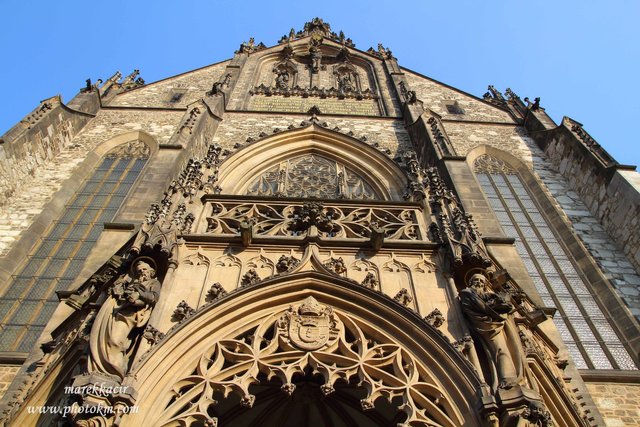
The church was severely damaged several times, especially during the Thirty Years' War.
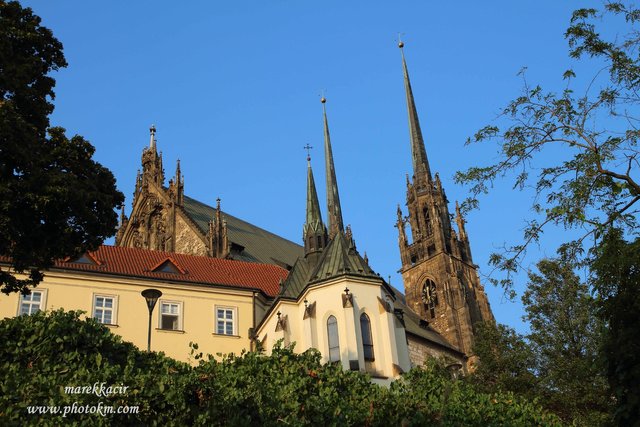
Gothic elements were removed from the interior and replaced with Baroque ones. As a result, the reconstruction did not stop and continued in the following years. The appearance of today's altar dates from the end of the 19th century, when the Baroque one was replaced by today's one, which is the work of the Viennese carver Jozef Leimer from 1891.
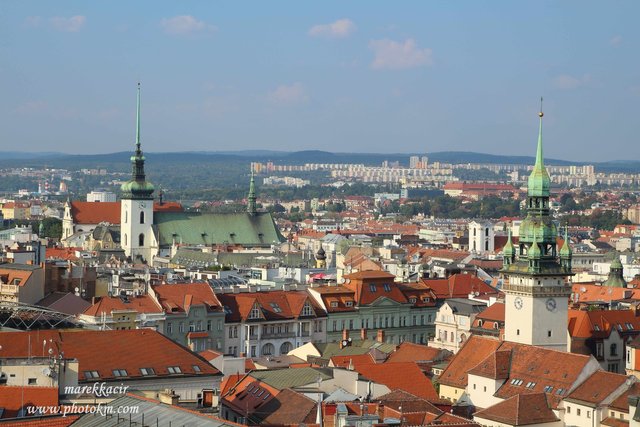
I could not miss the view of the city from the viewpoint in this cathedral. It has a wonderful view from all sides. From the height, I also look at the place I want to visit around the cathedral. It is Špilberk Castle. I'm watching the way I get to him and set off.
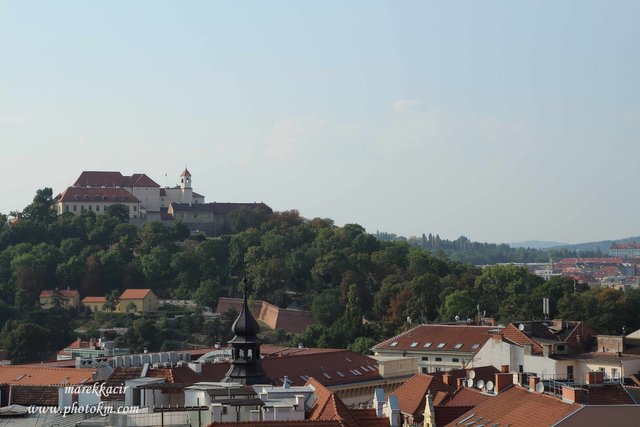
The castle is not far from the cathedral. I walk across the road and enter a park. I take the path to the entrance gate.
Špilberk Castle was founded in the second half of the 13th century by the Czech King Přemysl Otakar II. The kings visited this castle only exceptionally. The castle, as a representative seat, has stood since the middle of the 14th century. It was the seat of the Moravian margraves. However, this did not last long and the castle of Jošt's death loses its residential function and its military significance comes to the fore. He appeared during the Hussite wars, but also during the fighting between the Czech King George of Poděbrady and the Hungarian King Matej Korvín. In 1469, King Matej Korvín, with the support of the city of Brno, managed to conquer the castle after several sieges. Exhausted defenders agreed to surrender, left the castle to the king and left. Matej Korvín thus gained control over this important fortress, as well as over the whole of Moravia. Its political or military importance was slowly declining. This was also the case during the Thirty Years' War, when there was only a crew of forty at the castle. However, everything changed with the arrival of Swedish troops.
From several options for a tour of the castle, I choose a tour of the Bastion. The southwest bastion was established within two years. At that time, Špilberk Castle was preparing for the return of Swedish troops. The Swedes attacked the castle mainly from the west. It was from there that the castle faced massive artillery and undermining. Thanks to this ingenious fortification, the castle defended itself.
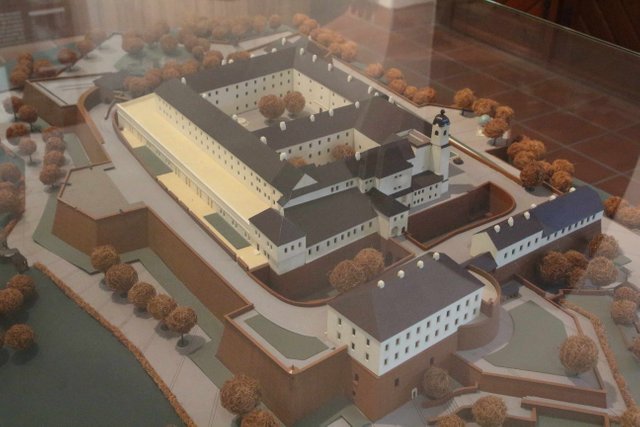
In 1742, it became an insurmountable obstacle for King Frederick II of Prussia.
In 1783, Emperor Joseph II decided to establish a prison in the castle for the most serious criminals. 200 criminals could be placed in casemates at the same time.
My time passed very quickly in the castle and I didn't even think about it and the castle closed. I had to go away, even though I didn't want to. I would like to look at other parts, but I will have to return here for that.
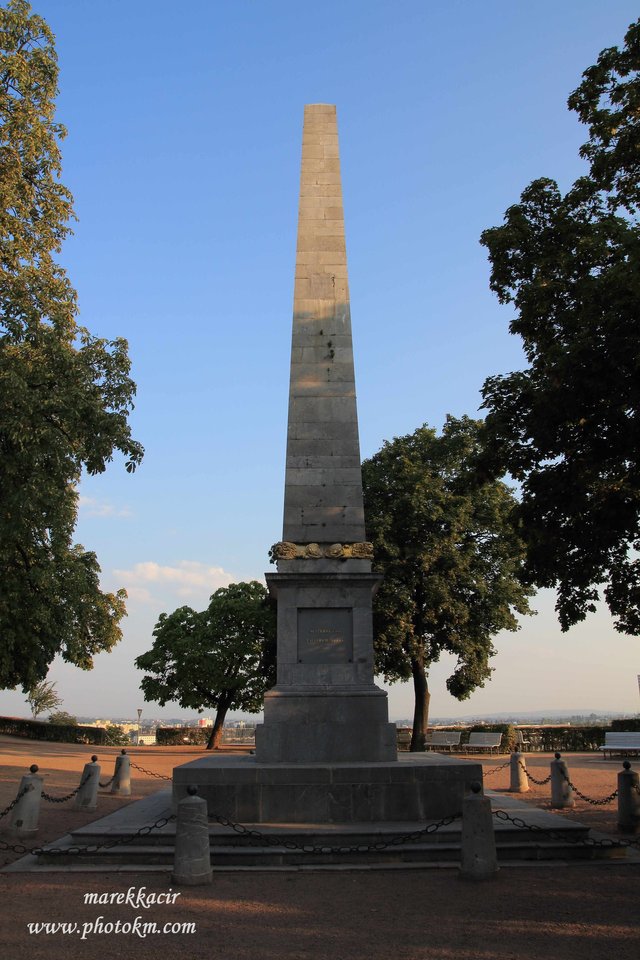
The night was approaching and I had to find my accommodation, which was close to the city center.
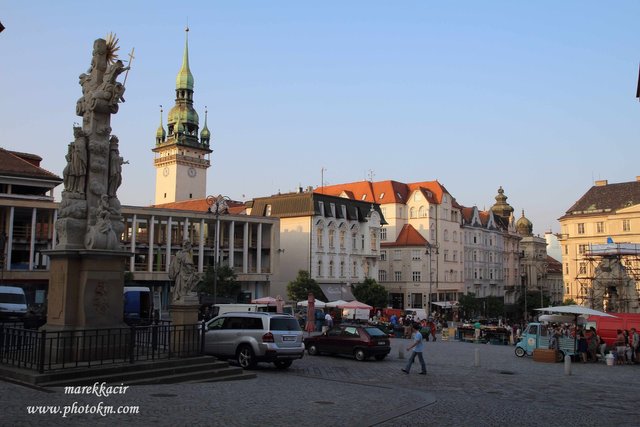
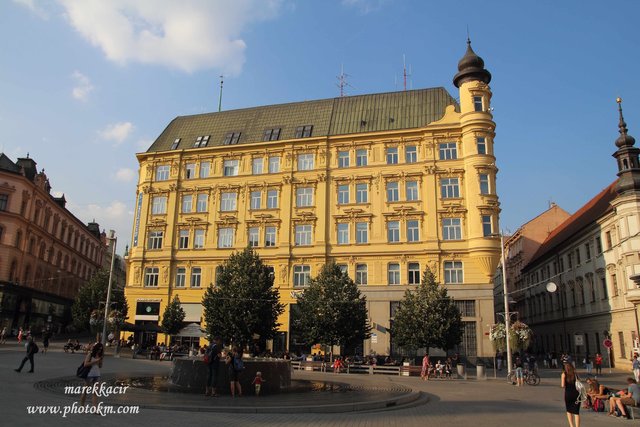
Work duties came up, but immediately after completing the training I returned to the city center. I planned to see the square and visit the local catacombs.
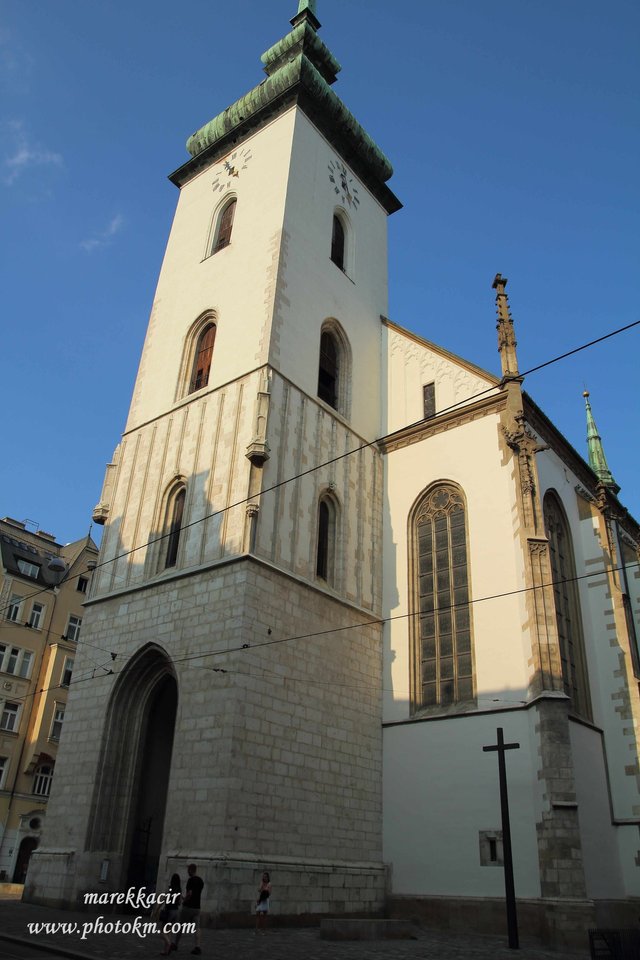
Specifically, I decided to visit Constance, which is located near the church of St. Jacob. It is an interesting place full of human skeletons.
I walk down the stairs and I'm a little worried about how I can handle it. However, I am determined to visit this place, so I buy a ticket and walk further down the stairs, underground. Bones are everywhere. In some places, they form as if walls and support the ceilings of this mysterious place.
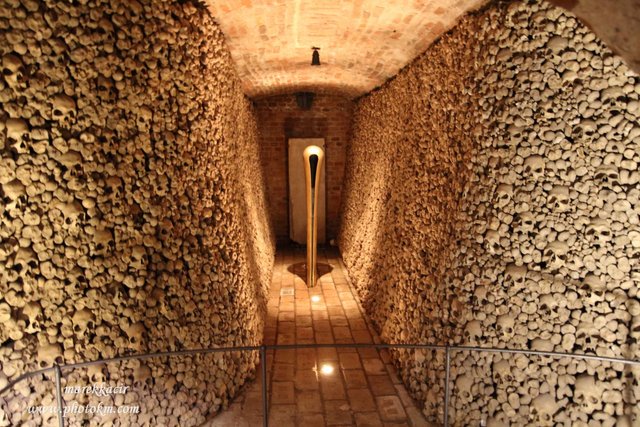
As the cemetery in the city was not enough to bury all the dead, after a few years the grave was dug up, the remains were removed and placed in the crypt under the church. They buried another deceased on the vacancy.
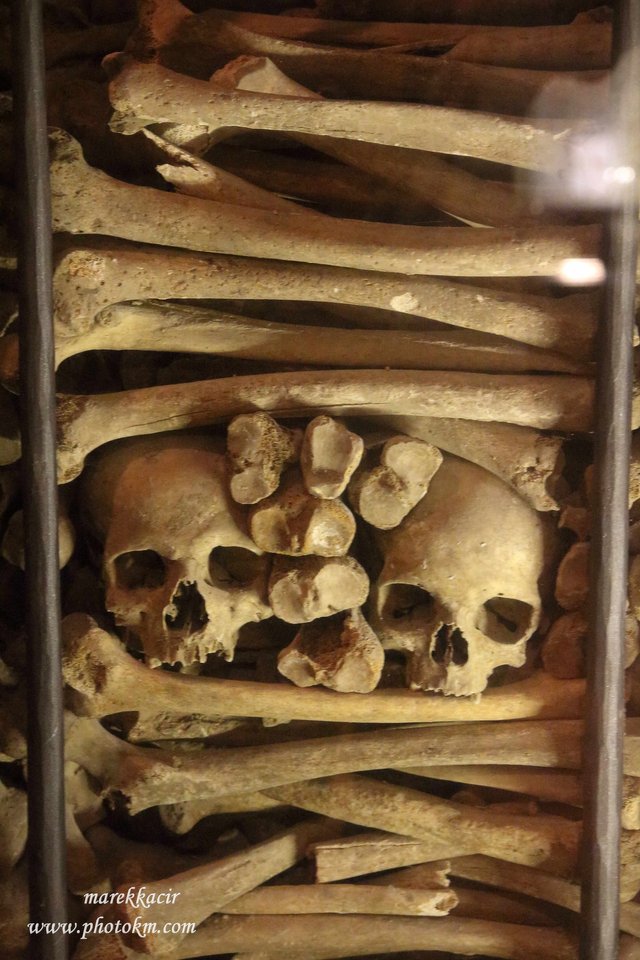
It is estimated that there are up to 50,000 buried in this ossuary. It is the second largest ossuary in the world after the ossuary in Paris.
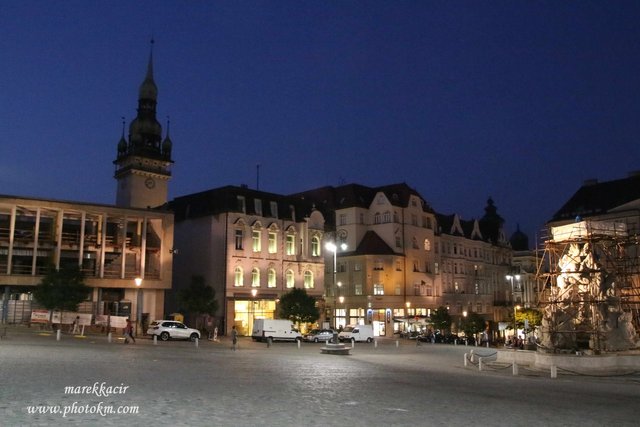
I go out with mixed feelings, but I'm glad I saw this place with my own eyes. I still have time to run the bus. The sun is slowly setting and I am taking the latest photos.
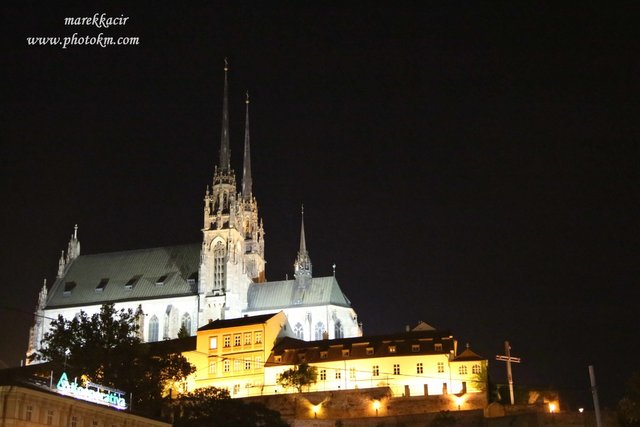
Brno is the largest city in Moravia and the second largest city in the Czech Republic. I didn't see everything I wanted from him. That's a good reason to come back here. Maybe again for some training, or even privately. This will give me more time to take a good look at everything.
well thank you
Po Slovensky
Z času na čas sa na mňa v práci usmeje šťastie a vedenie ma pošle na školenie. Pozitívne na tom je to, že okrem toho, že sa niečo nové dozviem a naučím, tak mám zmenu a a nemusím byť v práci. Väčšinou však chodievam stále na tie isté miesta, ktoré už dobre poznám. No tentoraz sa na mňa usmialo šťastie hneď dvakrát. Poslali ma na školenie a to do mesta v ktorom som ešte nebol. Neváhal som a so školením som súhlasil. Škoda len, že to bolo iba jednodňové školenie. Vymyslel som si to tak, že na miesto pôjdem hneď ráno deň vopred. Predsa len miesto školenia je od môjho bydliska vzdialené niekoľko stoviek kilometrov. Vďaka tomu s týmto návrhom vedenie firmy súhlasilo. Aj keď podmienkou bolo, že naspäť pôjdem v deň školenia tak, aby som ďalší deň už bol v práci.

Nastúpil som na vlak a vyrazil som. Čo čert nechcel, vlak mi meškal a ja som nestihol prípoj. Musel som teda čakať dve hodiny na ďalší. Nastúpil som na ten a vystúpil som na železničnej stanici v Brne. Ešte doma som si pozrel miesta, ktoré som chcel navštíviť. Rýchlo som sa zorientoval v vyrazil som do starého mesta.
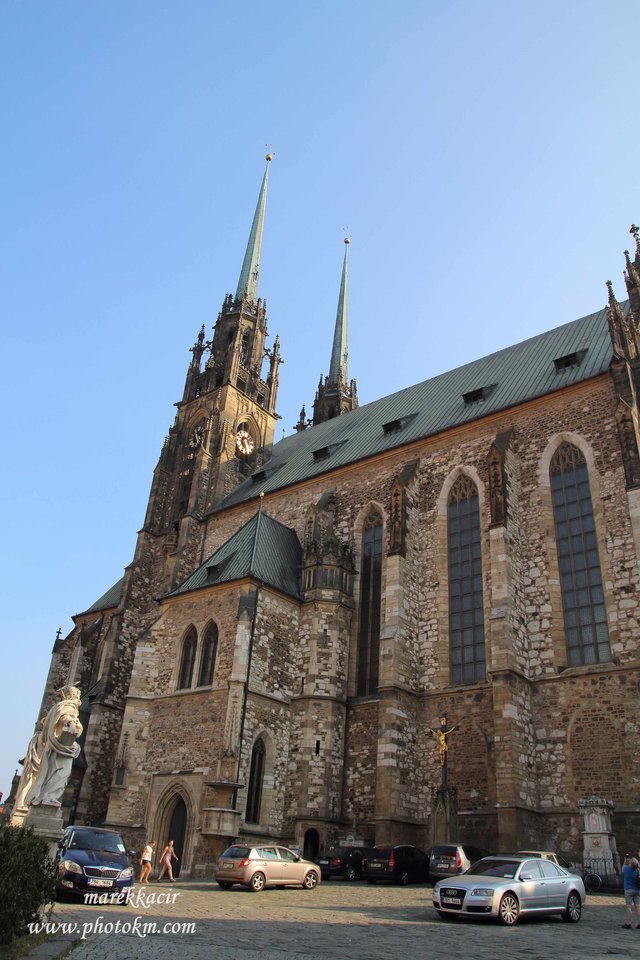
Moje kroky mierili ku Katedrále svätého Petra a Pavla. Už na prvý pohľad je to pekná stavba a dominanta mesta. Jej počiatky siahajú do 11-12 storočia, kedy bola na jej mieste vybudovaná románska kaplnka. Postupne si prechádzala zmenami, dostavbami, prestavbami.
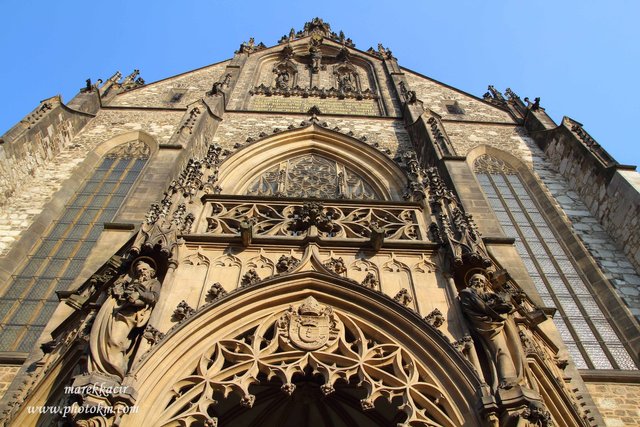
Kostol bol niekoľkokrát vážne poškodený, predovšetkým počas Tridsaťročnej vojny.
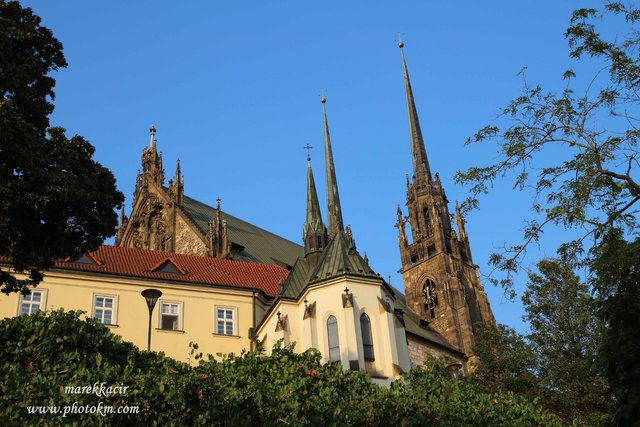
Z interiéru boli odstraňované gotické prvky a nahradili ich barokové. Tým sa prestavba nezastavila a pokračovala aj v ďalších rokoch. Podoba dnešného oltára pochádza z konca 19. storočia, keď bol barokový nahradený tým dnešným, ktorý je dielom Viedenského rezbára Jozefa Leimera z roku 1891.
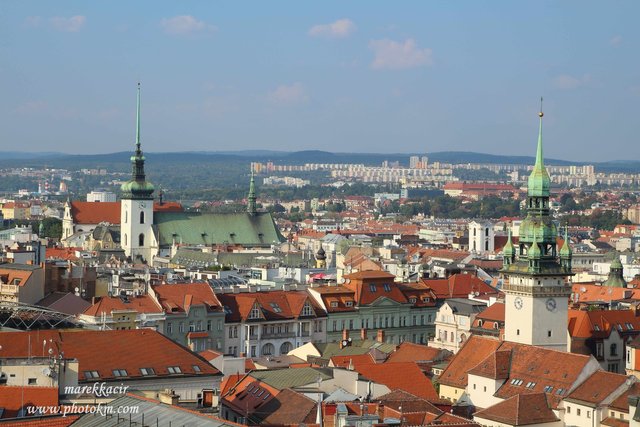
Výhľad na mesto som si nemohol nechať ujsť práve z vyhliadky v tejto katedrále. Je z nej nádherný výhľad na všetky strany. Z výšky si obzerám aj miesto, ktoré chcem navštíviť po katedrále. Je ním hrad Špilberk. Pozerám si cestu, ako sa k nemu dostanem a vyrážam.
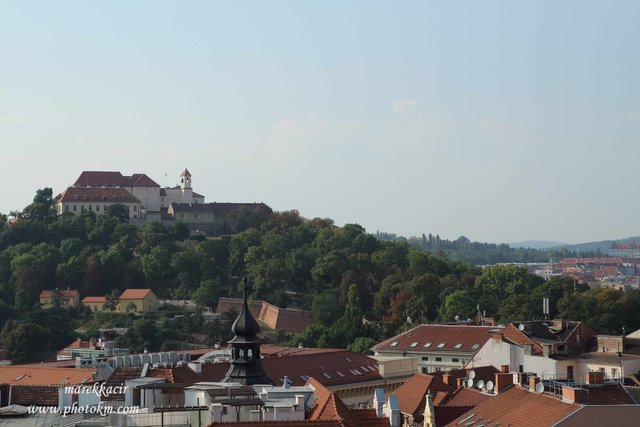
Hrad nie je od katedrály ďaleko. Prechádzam cez cestu a vchádzam do akéhosi parku. Cestičkou sa dostávam k vstupnej bráne.
Hrad Špilberk bol založený v druhej polovici 13. storočia českým kráľom Přemyslom Otakarom II. Králi tento hrad navštevovali iba výnimočne. Hrad, ako reprezentačné sídlo sa stalaž od polovice 14. storočia. Bol sídlom moravských markrabat. To však netrvalo dlho a hrad smrti Joštu stráca rezidenčnú funkciu a do popredia sa dostáva jeho vojenský význam. Ten sa ukázal počas husitských vojen, ale aj počas bojov medzi českým kráľom Jiřím z Poděbrad a uhorským kráľom Matejom Korvínom. V roku 1469 sa kráľovi Matejovi Korvínovi s podporou mesta Brno podarilo po niekoľkomesačnom obliehaní hrad dobyť. Vyčerpaní obrancovia súhlasili s kapituláciou, hrad kráľovi prenechali a odišli. Matej Korvín tak získal kontrolu nad touto významnou pevnosťou, i nad celou Moravou. Jeho význam politický, či vojenský pomaly klesal. Bolo tomu tak aj počas tridsaťročnej vojny, kedy na hrade bola iba štyridsaťčlenná posádka. Všetko sa však zmenilo príchodom švédskych vojsk.
Z viacerých možností prehliadky hradu si vyberám prehliadku Bastionu. Juhozápadný bastion vznikol behom dvoch rokov. Hrad Špilberk sa v tom čase pripravoval na návrat švédskych vojsk. Švédi útočili na hrad predovšetkým zo západu. Práve odtiaľ hrad čelil mohutnej delostreľbe a podkopávaniu. Aj vďake tento dômyselnej fortifikácii sa hrad ubránil.
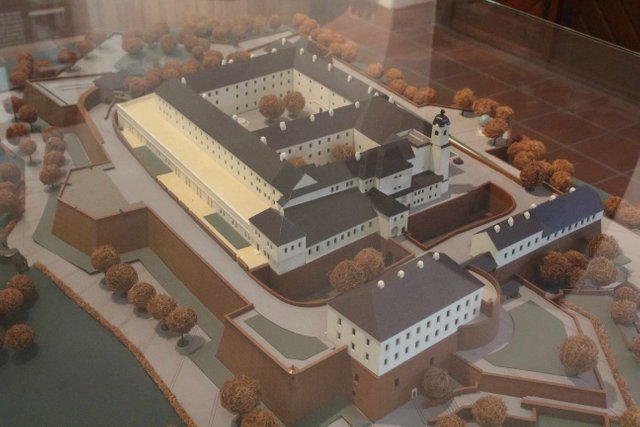
V roku 1742 sa stal neprekonateľnou prekážkou aj pre pruského kráľa Fridricha II.
V roku 1783 sa cisár Jozef II rozhodol o zriadení väzenia na hrade pre najťažších zločincov. V kasematoch mohlo byť súčasne umiestnených 200 zločincov.
V priestoroch hradu mi čas zbehol veľmi rýchlo a ani som sa nenazdal a hrad sa zatváral. Musel som sa pobrať preč, aj keď sa mi veľmi nechcelo. Rád by som si pozrel aj ďalšie časti, no na to sa sem budem musieť ešte vrátiť.

Blížila sa noc a ja som musel nájsť svoje ubytovanie, ktoré bolo neďaleko centra mesta.
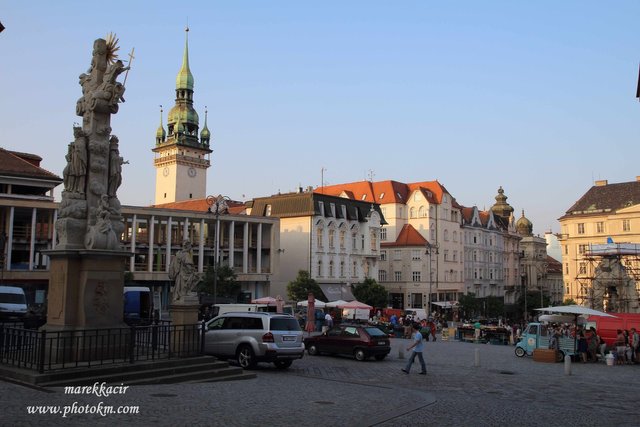
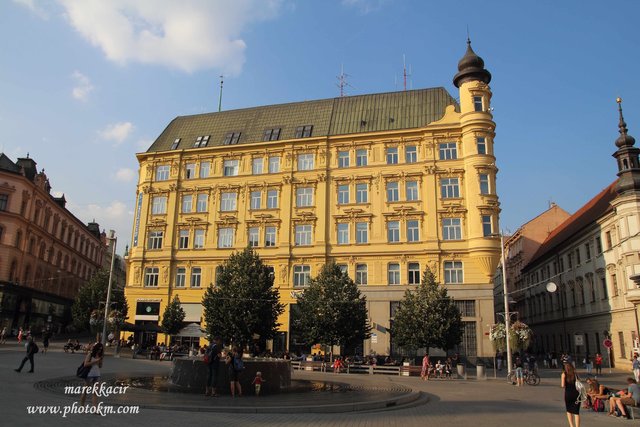
Na rad prišli pracovné povinnosti, no ihneď po absolvovaní školenia som sa vrátil späť do centra mesta. Na pláne som mal pozrieť si námestie a navštíviť miestne katakomby.
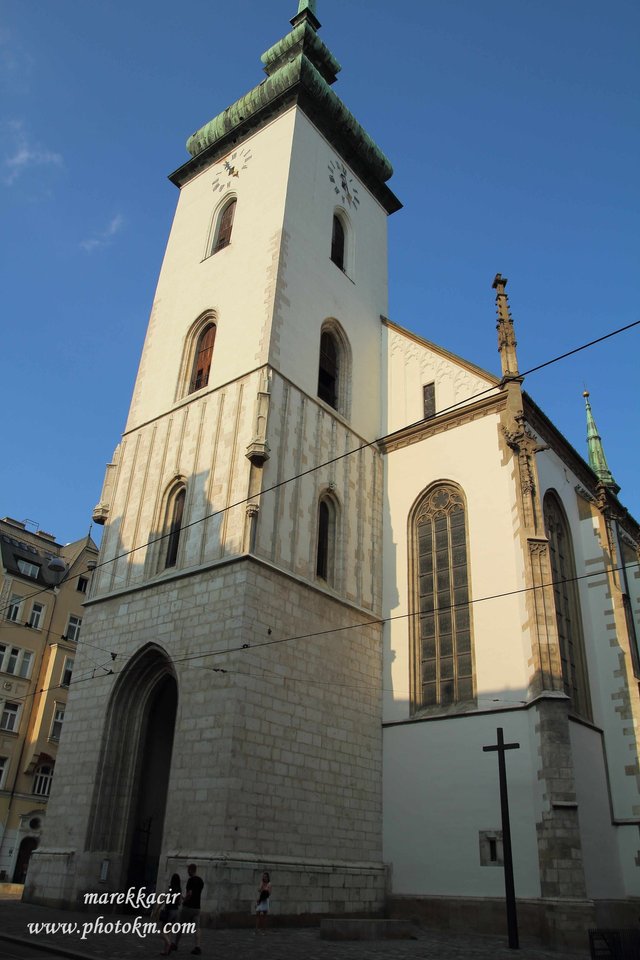
Konkrétne som sa rozhodol navštíviť Kostnicu, ktorá sa nachádza pri kostole sv. Jakuba. Je to zaujímavé miesto plné ľudských kostier.
Kráčam schodmi dole a mám mierne obavy, ako to zvládnem. Som však odhodlaný toto miesto navštíviť a tak si kupujem lístok a kráčam po ďalších schodoch ešte nižšie, do podzemia. Kosti sú tu všade. Na niektorých miestach tvoria akoby steny a podopierajú stropy tohto tajomného miesta.
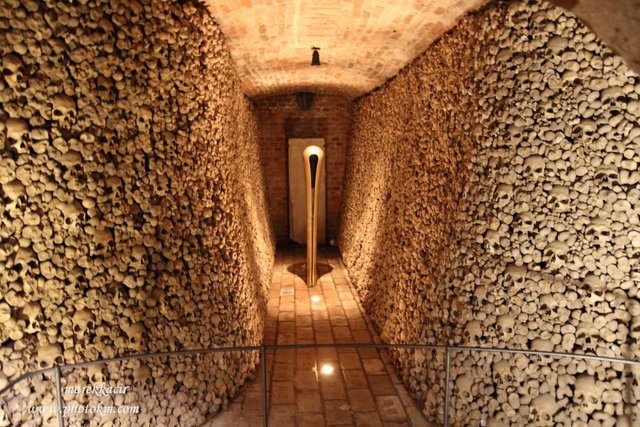
Nakoľko cintorín v meste nestačil na pochovávanie všetkých zosnulých, po niekoľkých rokoch sa hrob vykopal, pozostatky sa vybrali a vložili do krypty pod kostolom. Na prázdne miesto pochovali ďalšieho zosnulého.
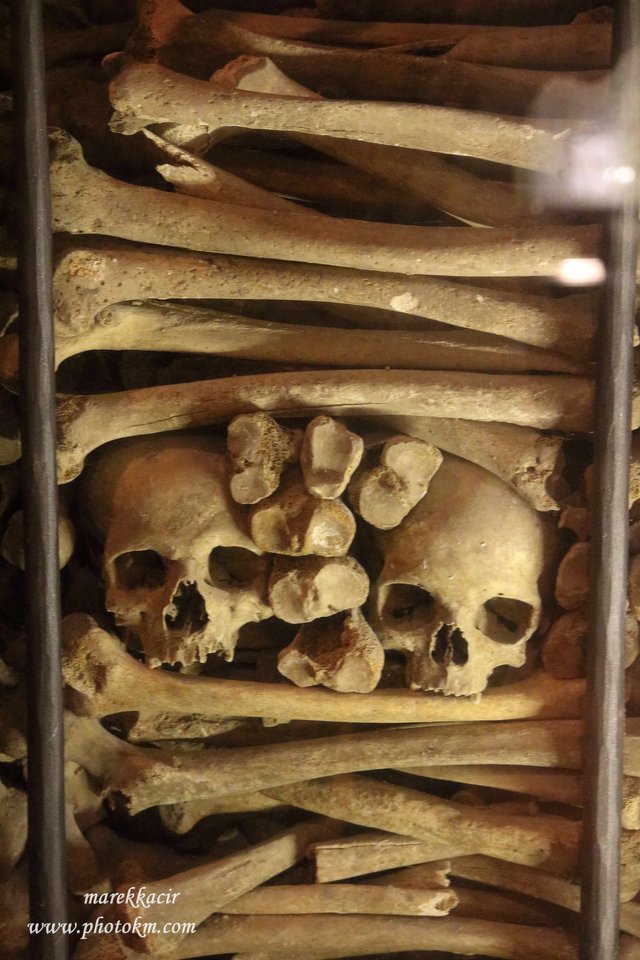
Odhaduje sa, že v tejto kostnici sa nachádza až 50 000 pochovaných. Po kostnici v Paríži je druhou najväčšou kostnicou na svete.
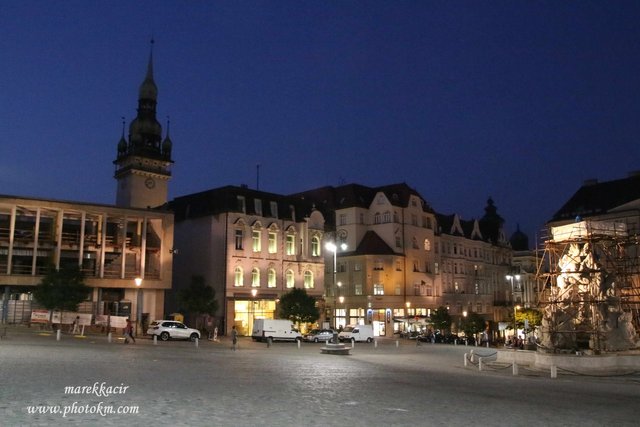
Vychádzam von so zmiešanými pocitmi, ale som rád, že som toto miesto videl na vlastné oči. Do odchodu autobusu mám ešte chvíľu čas. Slnko pomaly zapadá a ja si fotím posledné fotografie.
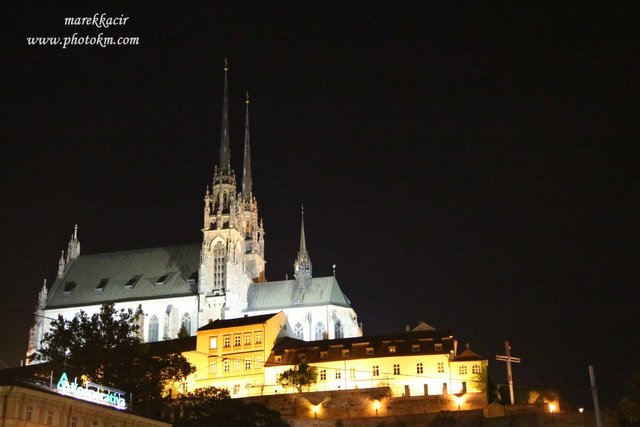
Brno je najväčšie mesto Moravy a druhé najväčšie mesto v Českej republike. Ani zďaleka som z neho nevidel všetko čo som chcel. To je dobrý dôvod, aby som sa sem vrátil. Možno opäť na nejaké školenie, alebo aj súkromne. To budem mať viac času si všetko poriadne pozrieť.
Ďakujem
Congratulations @photoparadise! You received the biggest smile and some love from TravelFeed! Keep up the amazing blog. 😍 Your post was also chosen as top pick of the day and is now featured on the TravelFeed.io front page.
Thanks for using TravelFeed!
@smeralda (TravelFeed team)
PS: You can now search for your travels on-the-go with our Android App. Download it on Google Play